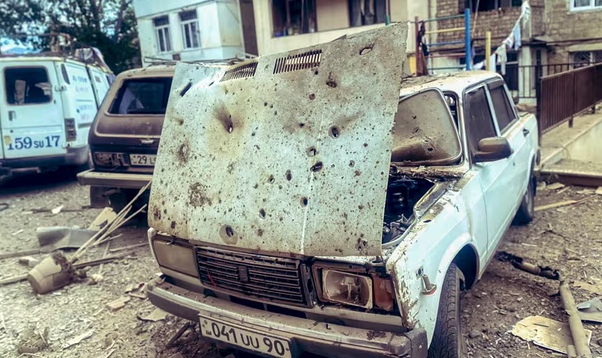On 19 September, residents of Nagorno-Karabakh woke up to sirens and explosions as Azerbaijan launched a large-scale offensive against the Armenian enclave located on its territory. The Azerbaijani authorities called their offensive an “anti-terrorist operation” aimed at bringing Nagorno-Karabakh back under Azerbaijani control and withdrawing armed Armenian troops from its territory, according to The Economist.
Officials in Armenia, including the country’s Prime Minister Nikol Pashinyan, have criticised Azerbaijan for unleashing a campaign of ethnic cleansing against Karabakh Armenians.
Videos of armed drone attacks on Armenian military positions, as well as the shelling of the regional capital Stepanakert, have appeared on the Internet. According to the human rights ombudsman in Nagorno-Karabakh, at least 25 people have been killed in the region so far, including two civilians. Ruben Vardanyan, a former Karabakh official, says:
“They haven’t stopped for 8-12 hours. It’s a full-scale war.”
Apparently Azerbaijan is demanding the complete surrender and disarmament of Karabakh. Hikmet Hajiyev, an adviser to Azerbaijan’s president, says:
“They [Armenian leaders] should disarm themselves and raise the white flag.”
Officials in Baku say the offensive was largely a reaction to elections held in the separatist enclave on 9 September and recent landmine explosions that killed six Azerbaijanis, including four police officers.
However, there is speculation that the attack had been in preparation for some time. A few days before the elections, Armenia accused Azerbaijan of massing troops near the border separating the two countries and around Nagorno-Karabakh.
Moreover, since late last year the Azerbaijani authorities have blocked the Lachin corridor to force the enclave’s leadership to comply. The blockade of the only road linking Nagorno-Karabakh with Armenia has provoked acute shortages of food, medicine and fuel. Hunger is widespread. The government in Baku agreed to reopen the corridor on 9 September, in exchange for the opening of another road linking Nagorno-Karabakh to the rest of Azerbaijan.
There have been two major wars on the territory of Nagorno-Karabakh in three decades. As a result of the latter, in 2020 Azerbaijan regained the territories around Karabakh occupied by ethnic Armenians since the 1990s, when the first war began. Nagorno-Karabakh is now populated exclusively by Armenians, but is formally part of Azerbaijan.
Prolonged hostilities in Nagorno-Karabakh could result in huge numbers of refugees and new atrocities from previous wars. The Azerbaijani army has already announced the opening of “humanitarian corridors” along the Lachin corridor for Armenian civilians.
According to Mr Hajiyev, the offensive should ensure the “reintegration” of Nagorno-Karabakh into Azerbaijan. However, it is unclear how this can be achieved without a total flight of Armenians from the region. The Azerbaijani government does not offer Nagorno-Karabakh any special rights or security guarantees. Mr Hajiyev said:
“It will be just like any other region of Azerbaijan.”
